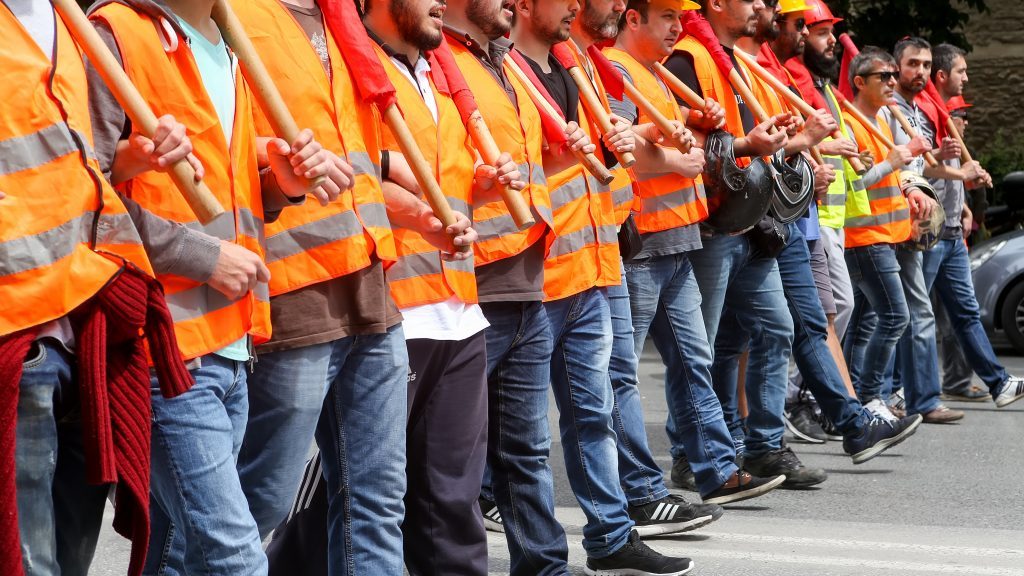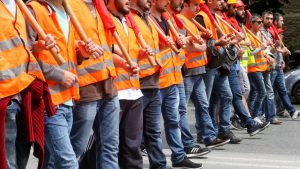John Stefanini, former business manager of Labourers’ International Union of North America Local 183 and a driving force of Toronto’s construction trade union movement, was hailed as a “man not afraid of anything,” by former NDP premier and federal Liberal leader Bob Rae.
The occasion was the launch of Stefanini’s memoirs, More Than We Bargained For: An untold story of exploitation, redemption, and the men who built a worker’s empire (Sutherland House 2019), at the Columbus Centre in Toronto.
“John’s book is an important historical record of the labour struggle for decent wages and health and safety we take for granted,” said Rae. “No one could push him around, not a premier, no one. But he always listened with quiet dignity.”
Stefanini wasn’t interested in running for office, he said, but was interested in building a union. And he was a remarkable success, as his memoir documents.
“You have to remember when the subways were being built in the 1960s many people died,” Rae said, noting the fight wasn’t just for money, it was to protect lives.

The book follows Stefanini’s path as he leaves Italy in 1959 to join his sister and brother-in-law as a gangly 18-year-old with nothing more than their address and a few dollars in his pocket.
Speaking no English, he was naturally drawn to the burgeoning Italian community in Toronto’s west end where he soon found camaraderie and work with tradesmen. It was soon apparent, however, that he had no aptitude for construction work, but it was just as quickly noted that he was rapidly learning English and was a good “people person.” Soon, he was working with the Brandon Hall group of trade unions which sought to break down barriers of the established unions catering to Scots, Irish and English workers.
Stefanini turned out to be a stellar organizer, signing up Italian tradesmen as quickly as he could find them.
The need was dire. In 1960, two major events occurred — a strike and the deaths of five Italian tunnel workers — sandhogs — at Hoggs Hollow in Toronto.
The appalling safety condition exposed by the latter led to calls for changes to the labour code, but also galvanized the nascent Italian-led labour union movement.
In 1961 there was a second strike, this one more violent and ugly which brought subway construction to a grinding halt. It lasted six weeks, but before it was over Stefanini was arrested and jailed. When it came to his trial, he, and others, were shocked to face sentences of up to six months imprisonment “as an example to others,” such was the establishment’s distaste for union disruption.
When he emerged from jail — with more stories to tell — Stefanini was a working-class hero and it spurred his organizing talents to greater heights, ultimately leading to the growth of LIUNA 183 into the biggest construction local in North America. It was a path that would also see him rise to become business manager.
Rae was keynote speaker at the Columbus Centre event, which was chaired by John Cartwright, president of the Toronto & York Region Labour Council. The event also featured speeches by Odoardo Di Santo, former NDP MPP and chair of Ontario Workers’ Compensation Board, former Liberal MPP Greg Sorbara,and former senator Consiglio Di Nino.
All brought high praise for Stefanini’s work and his memoirs.
“John changed the labour market,” said Sorbara. “We should give credit where credit is due because credit is not always given in this world. Before the big strikes there was not much sympathy for the Italian migrant workers.”
Di Nino was also laudatory and keyed on why Stefanini was successful: “John thought people should be treated as human beings. He made things better than they were.”
Indeed, his most productive work on the front lines of the labour movement wasn’t with a bullhorn or a picket sign, said Di Santo, it was behind the scenes quietly making the union more inclusive.
“In 1960 and 1961 there was something of a cultural revolution in Canada not seen since the 1919 strikes in Winnipeg,” Di Santo said. “The media focused on the violence of the strikes but not the underlying cause. What John was doing was not glamorous.”











Recent Comments
comments for this post are closed